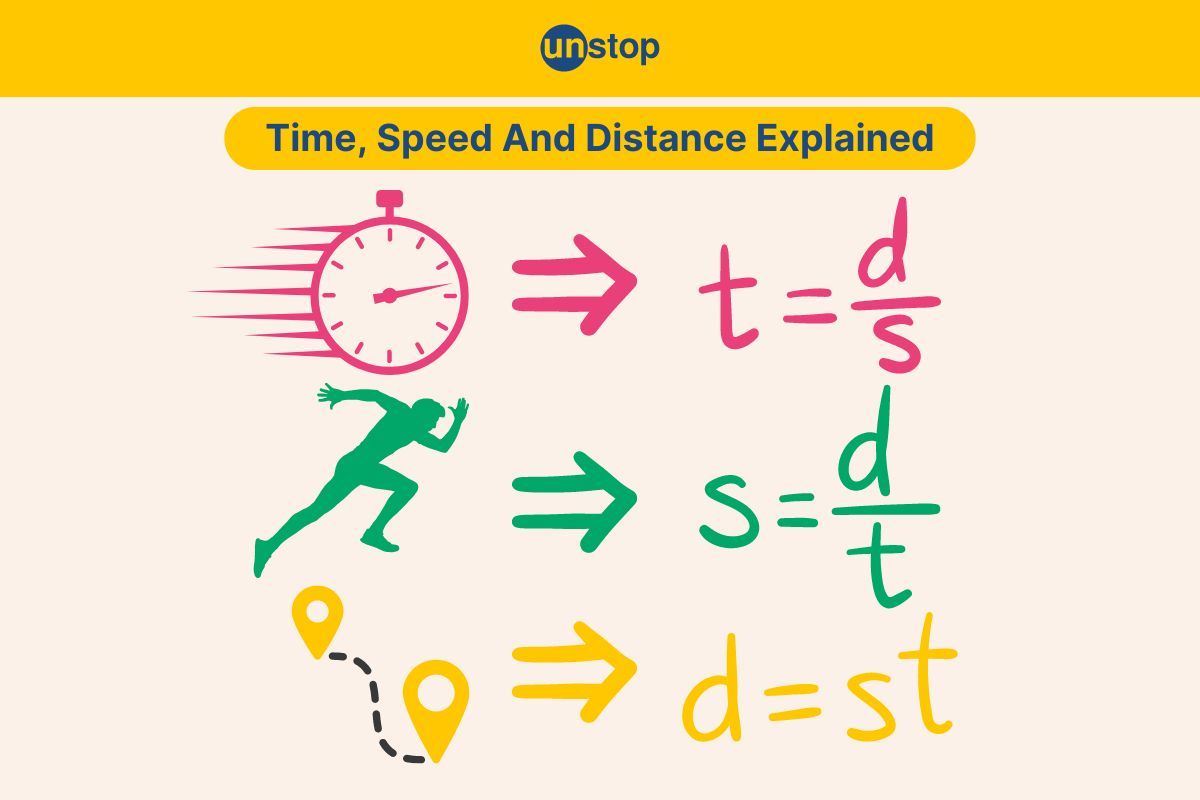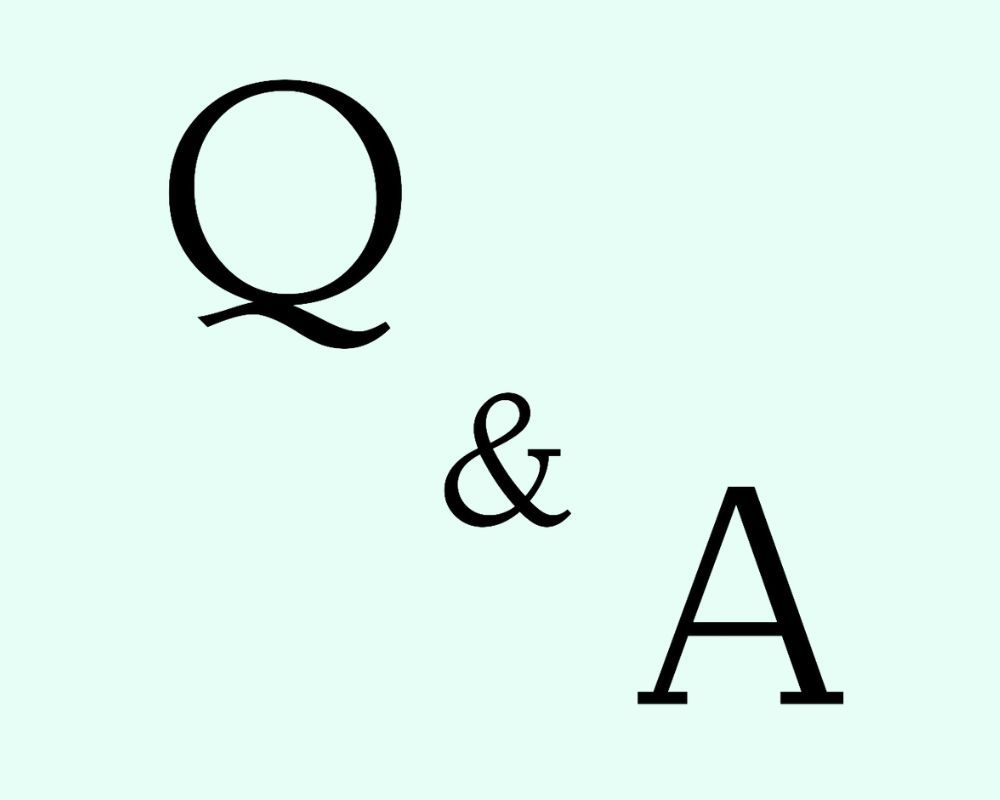- Step 1: The Groundwork
- Step 2: The Three Sections
- Step 3: Practice Makes Improvement
- The Secret Ingredient
- Understanding Basics Of Number Series
- Types Of Number Series Reasoning Questions
- Addition & Multiplication In Number Series
- Square & Cube-Based Number Series Patterns
- Missing Terms & Arranging Sequences
- Tricks & Tips For Solving Number Series
- Selected Number Series Questions With Solutions
- Frequently Asked Questions (FAQs)
- Must Know Terminologies in Blood Relation Questions
- Basic Approaches to Solve Blood Relation Questions
- Types Of Blood Relation Questions
- Tips For Solving Blood Relation Questions
- Multiple Choice Questions (MCQs) with Detailed Explanation
- Conclusion
- Frequently Asked Questions (FAQs)
- Letter Series In Logical Reasoning
- Types Of Letter Series Patterns
- Tips For Solving Letter Series Reasoning
- Best Practice Question Samples With Answers
- Conclusion
- Frequently Asked Questions (FAQs)
- Basics of Problems On Age-Related Questions
- Formula to Solve Problems on Ages-Related Questions
- Types of Age-Related Questions & Examples
- Tips & Tricks for Solving Ages Problems
- Best MCQs on Problems on ages with solved answers
- Conclusion
- Frequently Asked Questions (FAQs)
- Definition of Calendar
- Understanding Days of the Week
- What is a Leap Year?
- Concept of Odd Days in a Century
- Tips For Solving Calendar Reasoning Questions
- Best Calendar Reasoning Questions with Answers (MCQs)
- Frequently Asked Questions (FAQs)
- Basic Concepts of Clock
- Structure of a Clock
- Angle Equilavalence in Clock
- Tips For Solving Clock Questions
- Selected Clock Questions & Answers (MCQs)
- Conclusion
- Frequently Asked Questions (FAQs)
- Understanding The Concept Of Direction Sense
- Tips For Effective Problem-Solving In Direction Sense
- Practical Test Practice Questions And Answers
- Conclusion
- Frequently Asked Questions (FAQs)
- Importance Of Dice Reasoning
- Dice Numbers In Dice Reasoning
- Classification Of Dice
- Constructed Vs Deconstructed Dice
- Tricks & Tips For Solving Dice Problems
- Practice MCQs With Detailed Answers
- Conclusion
- Frequently Asked Questions (FAQs)
- Alphanumeric Series Defined
- Alphanumeric Series In Reasoning Tests
- Tips & Strategies For Solving Alphanumeric Series
- Practice Sample Questions With Detailed Answers
- Conclusion
- Frequently Asked Questions (FAQs)
- Concept Of Mirror Image Reasoning Explained
- Important Terms In Mirror Image Reasoning
- Types Of Mirror Images
- Identifying Correct Mirror Image
- Finding Clock's Mirror Image
- Tips To Solve Mirror Images
- Selected Practice Questions With Answers
- Conclusion
- Frequently Asked Questions (FAQs)
- Concept & Overview Of Input-Output
- Input-Output In Competitive Exams
- Types Of Input-Output Problems
- Strategies, Tips & Tricks For Solving Reasoning Questions
- Selected Practice Questions With Answers
- Conclusion
- Frequently Asked Questions (FAQs)
- Importance Of Finding The Odd One Out
- Tricks And Tips
- How to Find The Odd One Out?
- Solved MCQs with Detailed Explanation
- Conclusion
- Frequently Asked Questions (FAQs)
- Understanding Key Concepts
- Exploring Different Ranking Types
- Formula And Application Of Order And Ranking
- Tips For Solving Order & Ranking
- Selected Practice Questions And Answers
- Conclusion
- Frequently Asked Questions (FAQs)
- Importance Of Pipes & Cistern Aptitude
- Key Terminologies used in Pipes and Cisterns
- Pipes and Cisterns Formula with Examples
- Pipes and Cisterns Shortcut Tricks
- Tips For Solving Pipes & Cistern Problems
- Selected Questions & Answers For Practice (MCQs)
- Conclusion
- Frequently Asked Questions (FAQs)
- Key Concept in Boats and Streams
- Formulas Of Boats & Streams
- Distance & Time Formula
- Tips For Solving Boats & Streams Questions
- Selected Practice Questions With Answers (MCQs)
- Conclusion
- Frequently Asked Questions (FAQs)
- Concept of Mixture and Alligation
- Types Of Alligation Questions
- Formula for Solving Mixture & Alligation
- Tips For Solving Mixture And Alligation
- Selected Questions With Answers For Practice
- Conclusion
- Frequently Asked Questions (FAQs)
- Concepts and Definitions Related to Time and Work
- Important Time And Work Formulas
- Tricks and Tips to Solve Time & Work Questions
- Time And Work MCQs with Detailed Solution
- Conclusion
- Frequently Asked Questions (FAQs)
- What is Harmonic Progression(HP)?
- Formula to find the nth Term in Harmonic Progression
- Formula to find the Sum of the nth Term in HP
- What is Harmonic Mean?
- Harmonic Progression Solved Best MCQs
- Conclusion
- Frequently Asked Questions (FAQs)
- What is Mensuration in Maths?
- What are 2D figures in Mensuration?
- What are 3D figures in Mensuartion?
- Basic Terminologies In Mensuration
- Basic 2D Formulas in Mensuration
- Basic 3D Formulas in Mensuration
- 2D vs 3D in Mensuration
- Solved Questions With Solutions (MCQs)
- Conclusion
- Frequently Asked Questions (FAQs)
- Relationship Between Time, Speed And Distance
- Conversion Units Time, Speed And Distance
- Average & Relative Speed: Two Trains Moving in the same or opposite direction
- Solved MCQs on Time, Speed And Distance
- Conclusion
- Frequently Asked Questions (FAQs)
- What is Simplification in Maths?
- BODMAS Rule in Simplification Explained
- Simplification & Approximation Relation
- Key Terms in Simplification
- Examples Of Simplification Techniques
- Simplification Questions With Solved Answers (MCQs)
- Conclusion
- Frequently Asked Questions (FAQs)
- Height And Distance Important Terms
- Right Angled Triangle In Trigonometry
- Trigonometric Ratios
- Solved Examples For Better Understanding
- Height And Distance Applications In Trigonometry
- Height And Distance Practice Questions & Answers
- Conclusion
- Frequently Asked Questions (FAQs)
- Defining Interest Types
- Simple Interest Vs. Compound Interest
- Selected Solved Questions & Answers
- Conclusion
- Frequently Asked Questions (FAQs)
- Basic Concepts Of Profit And Loss
- Determining Selling Price
- Calculating Discounts
- Formulas For Calculating Profit And Loss
- Examples Of Profit And Loss
- Profit & Loss Questions With Detailed Solution
- Conclusion
- Frequently Asked Questions (FAQs)
- Defining Angle Of Elevation
- Key Terms Used In Angle Of Elevation
- Angle of Elevation Formula with Example
- Angle of Elevation vs. Angle of Depression
- Angle of Elevation MCQs with Answers
- Conclusion
- Frequently Asked Questions (FAQs)
- Defining HCF And LCM
- Calculation Methods Of HCF And LCM
- HCF By Prime Factorization Method
- LCM By Prime Factorization Method
- Difference Between HCF And LCM
- HCF & LCM Practice Questions With Answers
- Conclusion
- Frequently Asked Questions (FAQs)
- What is fraction and decimal?
- Understanding Decimal Fraction
- Place Value in Decimal Fraction
- Mathematical Operations with Decimal Fraction
- Practice with Solved Examples
- Summary
- Frequently Asked Questions
- All About Decimals
- All About Fractions
- How to Convert a Decimal into Fraction
- Simple vs Recurring Decimals
- Converting Recurring Decimals to Fractions
- Conversion Charts
- Practice Questions (With Solutions)
- Closing Thoughts
- Frequently Asked Questions
- What is Arithmetic Mean?
- Arithmetic Mean Formula- Ungroup Data & Group Data
- Merits of Arithmetic Mean
- Demerits of Arithmetic Mean
- Alternatives to Arithmetic Mean
- What is the Weighted Arithmetic Mean?
- Arithmetic vs. Geometric Mean
- Arithmetic Mean Application in Statistical Analysis
- Arithmetic Mean Practice Questions with Explanation
- Frequently Asked Questions
- What is Geometric Progression?
- Key Properties of Geometric Progression
- General Form Of Geometric Progression
- General Term or the Nth Term of Geometric Progression
- The sum of nth Terms of GP
- Types Of Geometric Progression
- Solved Questions and Answers of GP
- Conclusion
- Frequently Asked Questions (FAQs)
- Average in Maths
- Average Formula in Maths
- Differentiating Types of Average
- How to Calculate Average of Negative Numbers?
- Practical Applications of Averages
- Average Questions For Practice
- Frequently Asked Questions
- What is Simple Interest in Maths?
- Simple Interest Formula Explained
- Simple Interest Formula for Years, Months & Days
- Simple Interest Examples & Practice Questions
- Conclusion
- Frequently Asked Questions (FAQs)
- Defining Mathematical Ratios
- Understanding Proportions Fundamentals
- Differentiating Ratios from Proportions
- Ratio and Proportion Formulas
- Properties of Ratio and Proportion
- How to Solve Ratio and Proportion Problems
- Ratio and Proportion Problems (With Solutions)
- Summary
- Frequently Asked Questions
- What is Number in Maths?
- Types of Numbers With Example
- Real vs Complex Numbers Explored
- Basic Operations on Numbers
- Practice Questions (With Solutions)
- Frequently Asked Questions
- What is Arithmetic Progression (AP) in Maths?
- Important Terminologies in Arithmetic Progression
- Basic Terms in Arithmetic Progression
- General Form Of Arithmetic Progression Series
- Types Of Arithmetic Progression
- Solved Questions With Explanation (MCQs)
- Conclusion
- Frequently Asked Questions (FAQs)
- Understanding Basic Concept
- Importance Of Train Problems In Aptitude
- Tips To Solve Train Problems
- Selected Practice Questions & Answers
- Conclusion
- Frequently Asked Questions (FAQs)
- Definition Of Mode
- Calculating Mode For Ungrouped Data
- Calculating Mode For Grouped Data
- Bimodal, Trimodal & Multimodal Distributions
- Comparing Mean, Median & Mode
- Selected Practice Questions With Answers
- Conclusion
- Frequently Asked Questions (FAQs)
- Important Concept In Races And Games
- Calculating Time, Speed & Distance
- Importance Of Races And Games Problems
- Sample Practice Questions With Answers
- Conclusion
- Frequently Asked Questions (FAQs)
- Types Of Partnership
- Formula For Partnership Questions
- Tips To Solve Partnership Aptitude Questions
- Selected Partnership Questions (Practice MCQs)
- Conclusion
- Frequently Asked Questions (FAQs)
Time, Speed & Distance: Formulas, Solved Quantitative Aptitude MCQs

Understanding the relationship between time, speed, and distance is essential in solving quantitative aptitude questions. Whether calculating the time taken for a journey, the speed of a moving object, or finding the distance covered, these concepts are fundamental in aptitude tests.
Relationship Between Time, Speed And Distance
When an object moves at a certain speed for a specific amount of time, it covers a certain distance. This can be expressed using the formula:
Distance= SpeedxTime.
Conversely, if you know the distance and speed, you can calculate the time taken by rearranging the formula:
Time= Distance/Speed.
Likewise, the formula for speed is Speed= Distance/Time.
Speed Impact On Time
When speed increases, the time required to cover a specific distance decreases. For instance, if a car travels at 60 miles per hour instead of 30 miles per hour, it takes half the time to reach a destination 60 miles away.
Average Speed Concept
Dividing the total distance travelled by the total time taken gives us the average speed. It provides a more realistic representation of an object's overall speed during a journey.
Click here to enhance and upskill your quantitative aptitude in time, speed and distance right away!

Conversion Units Time, Speed And Distance
The most common units for measuring speed include meters per second (m/s), kilometres per hour (km/h), and miles per hour (mph). Time can be measured using different units such as seconds, minutes, and hours. Here are the common conversion units for time, speed, and distance:
| Conversion | From | To | Value |
|---|---|---|---|
| Speed Conversions | |||
| 1 km/h | kilometres per hour (km/h) | meters per second (m/s) | 0.277 m/s |
| 1 m/s | meters per second (m/s) | kilometres per hour (km/h) | 3.6 km/h |
| 1 mph | miles per hour (mph) | kilometres per hour (km/h) | 1.609 km/h |
| 1 knot | knots | kilometres per hour (km/h) | 1.852 km/h |
| Time Conversions | |||
| 1 hour | hours | minutes | 60 minutes |
| 1 hour | hours | seconds | 3600 seconds |
| 1 minute | minutes | seconds | 60 seconds |
| Distance Conversions | |||
| 1 kilometer | kilometres (km) | meters (m) | 1000 meters |
| 1 mile | miles | kilometres (km) | 1.609 km |
| 1 meter | meters (m) | centimetres (cm) | 100 centimetres |
| 1 foot | feet | meters (m) | 0.3048 meters |
Average & Relative Speed: Two Trains Moving in the same or opposite direction
|
Average speed |
Average speed= Total distance travelled/Total time taken |
|
Average speed (When distance is constant) |
2xy/x+y |
|
Relative speed (If two trains are moving in opposite directions) |
Relative speed=X+Y Time taken= L1 + L2/X+Y Where L1 & L2 are the lengths of the two trains |
|
Relative speed (If two trains are moving in the same direction) |
Relative speed=X-Y Time taken= L1 + L2/X-Y Here, L1 & L2 are the lengths of the trains |
Solved MCQs on Time, Speed And Distance
Time, speed and distance concepts are commonly tested in quantitative aptitude exams through various question types:

Question 1. Jayshree goes to the office at a speed of 6 km/h and returns to her home at 4 km/h. If she takes 10 hours, what is the distance between her office and home?
(a) 24 km
(b) 12 km
(c) 10 km
(d) 30 km
Solution: a) 24 km
Explanation: Solve using the options
d/6 + d/4 = 10
Using the option a) 24
24/6 + 24/4 = 10
4 + 6 = 10
10 = 10
So, the correct option is a)24 km.
Question 2. A and B travel the same distance at the rate of 8 kilometres and 10 kilometres an hour, respectively. If A takes 30 minutes longer than B, the distance travelled by B is
(a) 6 km
(b) 10 km
(c) 16 km
(d) 20 km
Solution: d) 20 km
Explanation: Solve using options.
The value in option (d) fits the situation as
= d/8 – d/10
= 20/8 – 20/10 = 2.5 – 2 = 0.5 hours = 30 minutes.
Question 3. Ram and Shyam run a race of 200m. First, Ram gives Shyam a start of 200m and beats him by 30s. Next, Ram gives Shyam a start of 3 min and is beaten by 1000 metres. Find the time in minutes when Ram and Shyam can run the race separately.
(a) 8, 10
(b) 4, 5
(c) 5, 9
(d) 6, 9
Solution: a) 4,5
Explanation: When Ram runs 2000 m, Shyam runs (1800 – 30s)
When Ram runs 1000 m, Shyam runs (2000 – 180s)
Then, 2000/1000 = 1800-30s2000-180s
Solving, we get s = 6.66 m/s.
Thus, Shyam’s speed = 400 m/minute, and he would take 5 minutes to cover the distance.
Question 4. A train requires 7 seconds to pass a pole, while it requires 25 seconds to cross a stationary train, which is 378 metres long. Find the speed of the train.
(a) 75.6 km/h
(b) 75.4 km/h
(c) 76.2 km/h
(d) 21 km/h
Solution: a) 75.6 km/h
Explanation: 7 x St = Lt
25 x St = Lt + 378
Solving, St = 21 m/sec = 21 X 18/5 = 75.6 kmph
Question 5. A boat sails down the river for 10 km and then up the river for 6 km. The speed of the river flow is 1 km/h. What should be the minimum speed of the boat for the trip to take a maximum of 4 hours?
(a) 2 km/h
(b) 3 km/h
(c) 4 km/h
(d) 5 km/h
Solution: c) 4 kmph
Explanation: Solve through options. For option (c) at 4 km/h, the boat would take exactly 4 hours to cover the distance.
d/10+d/6=1
4/10+4/6=1
Question 6. A boat sails 40 km upstream in 8 h and a distance of 49 km downstream in 7 h. The speed of the boat in still water is
(a) 5 km/h
(b) 5.5 km/h
(c) 6 km/h
(d) 6.5 km/h
Solution: c) 6km/h
Explanation: Upstream speed = 40/8 = 5 kmph.
Downstream speed = 49/7 = 7 kmph.
Speed in still water = average of upstream and downstream speed = 6 km/h.
Question 7. Vinay runs 100 metres in 20 seconds, and Ajay runs the same distance in 25 seconds. By what distance will Vinay beat Ajay in a hundred-metre race?
(a) 10 m
(b) 20 m
(c) 25 m
(d) 12 m
Solution: b) 20 m
Explanation: Speed of Vinay = 5 m/s; Speed of Ajay = 4m/s.
In a hundred-meter race, Vinay would take 20 seconds to complete, and this time, Ajay would only cover 80 meters. Thus, Vinay beats Ajay by 20 meters in a hundred-meter race.
Question 8. Vinay and Shyam participated in a 500-meter race where Vinay had a head start of 140 meters. The ratio of their speeds was 3:4. How much did Vinay win in the race?
(a)15 m
(b) 20 m
(c) 25 m
(d) 30 m
Solution: b) 20 m
Explanation: When Shyam does 500, Vinay does 375. Since Vinay has a start of 140 m, it means that Vinay only needs to cover 360 m to reach the destination.
When Vinay does 360, Shyam would cover 480 m and lose by 20 m. (Since the ratio of their speeds is 3:4)
Question 9. How many seconds will a caravan 120 metres long running at the rate of 10 m/s take to pass a standing boy?
(a) 10 s
(b) 12 s
(c) 11 s
(d) 14 s
Solution: b) 12 s
Explanation: Distance to be covered = 120 meters.
Speed = 10m/s; time required = 120/10 =12 seconds.
Question 10. The two trains departing from Muzaffarpur at different times, one at 8:30 a.m. and the other at 9:00 a.m., are travelling at speeds of 60 km/h and 70 km/h. How far from Muzaffarpur will the two trains meet each other?
(a) 210 km
(b) 180 km
(c) 150 km
(d) 120 km
Solution: a) 210 km
Explanation: When the second train leaves Muzaffarpur, the first train will have already travelled 30 km. Now, after 9 AM, the relative speed of the two trains would be 10 km/h (i.e. the rate at which the faster train would catch the slower train).
Since the faster train has to catch up a relative distance of 30 km for the trains to meet, it would take 30/10 = 3 hours to catch up. Distance from Muzaffarpur = 70 X 3 = 210 km.
Conclusion
Understanding the intricacies of time, speed, and distance is crucial for various real-life applications. The relationship between these elements is not only mathematical but also practical, influencing daily decisions and problem-solving scenarios. Individuals can enhance their quantitative aptitude skills and tackle speed-related problems with confidence by mastering the concepts discussed in this article.
To delve deeper into the realm of time, speed and distance calculations, readers are encouraged to practice solving a variety of problems across different contexts. Applying the strategies outlined here in diverse scenarios will not only solidify understanding but also sharpen analytical thinking. Embracing these principles will undoubtedly pave the way for improved problem-solving abilities in both academic and practical settings.
Time For A Small Quiz
Frequently Asked Questions (FAQs)
1. How are time, speed and distance related in the context of physics?
In physics, speed measures how fast something moves. When an object goes faster, it takes less time to travel a certain distance.
2. What are some common units used to measure speed, time, and distance?
Speed is typically measured in units like meters per second (m/s) or kilometres per hour (km/h). Time can be measured in seconds, minutes, or hours. Distance is commonly measured in meters (m) or kilometres (km).
3. How can one convert between different speed, time, and distance units?
You can use conversion factors to convert units of speed, time, or distance. For example, to convert km/h to m/s, multiply by 5/18. Always ensure you understand the relationship between the units before converting.
4. How is average speed calculated when considering varying speeds during a journey?
To find the average speed, divide the total distance by the time taken. Make sure to consider any changes in speed by adding up the distances covered at each speed.
5. What role does inverse proportionality play in understanding speed concepts?
Inverse proportionality means that when one thing goes up, the other goes down constantly. For example, if time increases while distance stays the same, speed will decrease.
Suggested reads:
- What Is Mensuration: Formulas With Top Selected Question & Answer
- Harmonic Progression- Formula With Selected Questions & Answers
- Mixture And Alligation: Explained With Selected Question & Answer
- Boats And Streams: Formula, Top Question With Solution (Aptitude)
- Clock Questions: Selected Question & Answer (Aptitude) Explained
Instinctively, I fall for nature, music, humor, reading, writing, listening, traveling, observing, learning, unlearning, friendship, exercise, etc., all these from the cradle to the grave- that's ME! It's my irrefutable belief in the uniqueness of all. I'll vehemently defend your right to be your best while I expect the same from you!
Login to continue reading
And access exclusive content, personalized recommendations, and career-boosting opportunities.
Subscribe
to our newsletter
















Comments
Add comment